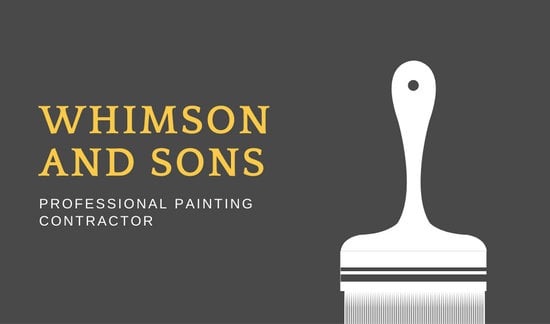Figure Out Just How Seasonal Aspects Influence Industrial External Painting Success And Find The Very Best Times To Make Certain Long-Term Outcomes For Your Task
Figure Out Just How Seasonal Aspects Influence Industrial External Painting Success And Find The Very Best Times To Make Certain Long-Term Outcomes For Your Task
Blog Article
Web Content By-Aguilar Whalen
When you're planning an industrial exterior paint task, seasonal variables can make or break your results. You'll wish to take into consideration just how temperature level and moisture effect paint application and drying out times. Choosing the appropriate season can ensure your paint sticks properly and lasts much longer. Yet which seasons are genuinely the very best for this type of job? Allow's check out the crucial elements that can influence your task's success.
The Effect of Temperature on Paint Application
When you're intending an industrial external paint project, the temperature can dramatically affect how well the paint adheres and dries out.
Ideally, you intend to paint when temperature levels range between 50 ° F and 85 ° F. If it's too cool, the paint might not cure appropriately, bring about issues like peeling or splitting.
On the other side, if it's also warm, the paint can dry out as well quickly, protecting against proper attachment and leading to an irregular finish.
You must likewise think about the moment of day; morning or late afternoon supplies cooler temperature levels, which can be more favorable.
Constantly examine the supplier's suggestions for the particular paint you're using, as they commonly offer advice on the ideal temperature range for optimal results.
Humidity and Its Effect on Drying Times
Temperature isn't the only environmental element that influences your industrial external painting task; humidity plays a substantial role as well. High moisture levels can decrease drying out times substantially, influencing the general high quality of your paint task.
When the air is filled with wetness, the paint takes longer to cure, which can lead to problems like poor adhesion and a higher risk of mold development. If you're painting on an especially damp day, be gotten ready for extended wait times in between coats.
Suggested Web page to keep track of local climate condition and plan appropriately. Ideally, go for moisture degrees between 40% and 70% for ideal drying out.
Keeping these factors in mind ensures your job remains on track and provides a long-term surface.
Best Seasons for Commercial Outside Paint Projects
What's the most effective season for your industrial exterior paint projects?
Springtime and very early fall are usually your best bets. During these periods, temperatures are mild, and humidity degrees are commonly lower, producing suitable conditions for paint application and drying.
Stay clear of summer season's intense heat, which can cause paint to completely dry as well quickly, bring about poor attachment and finish. Likewise, wintertime's chilly temperature levels can hinder correct drying and treating, risking the longevity of your paint work.
what is it worth for days with temperature levels in between 50 ° F and 85 ° F for optimum outcomes. Remember to examine the local weather report for rainfall, as damp conditions can wreck your task.
Preparation around these factors ensures your painting project runs smoothly and lasts much longer.
Final thought
To conclude, planning your commercial external painting jobs around seasonal factors to consider can make a substantial difference in the end result. By scheduling work throughout the perfect temperature levels and humidity degrees, you'll make sure much better attachment and drying out times. Remember to watch on regional weather forecasts and choose the right time of year-- spring and early loss are your best options. Taking these steps will certainly assist you achieve a long lasting and specialist coating that lasts.
